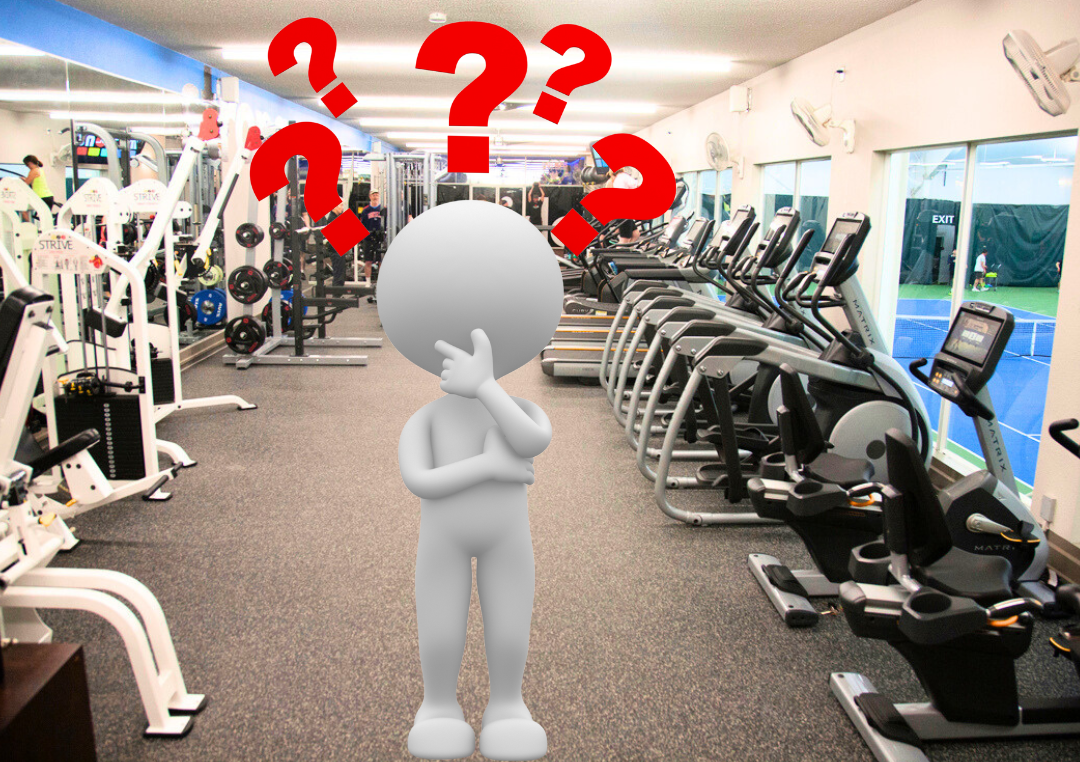You’ve probably signed up for the gym with big goals in mind. But are you truly getting the most out of every visit?
Imagine turning your workouts into powerful sessions that boost your energy, confidence, and results faster than you thought possible. You’ll discover simple yet effective ways to maximize your time at the gym. Whether you’re a beginner or someone who’s been going for a while, these tips will help you stay motivated and see real progress.
Keep reading—you’re about to unlock your full potential.
Setting Clear Goals
Setting clear goals is the first step to a successful gym routine. Goals give you a path to follow and keep you motivated. They help you focus on what matters and avoid wasting time.
Without clear targets, workouts can feel random and less effective. Goals make every gym visit count. They push you to improve bit by bit, day by day.
Short-term Vs Long-term Targets
Short-term targets are small goals you reach soon. Examples include doing 10 push-ups or walking 3,000 steps daily. These goals build habits and boost confidence.
Long-term targets take more time and effort. They might be losing 20 pounds or running a 5K race. Long-term goals keep you focused on big changes.
Both types of goals work together. Short-term targets give quick wins. Long-term targets provide a bigger purpose.
Tracking Progress
Tracking progress shows how far you have come. It helps you see what works and what needs change. Use a notebook or apps to record workouts.
Write down weights, reps, or time spent. Check your progress weekly. Small improvements add up fast.
Tracking keeps you honest and motivated. It stops you from guessing your success. Clear records make your goals real and reachable.

Credit: www.sundried.com
Designing Effective Workouts
Designing effective workouts is key to getting the best results from your gym time. A well-planned routine helps you build strength, burn fat, and improve your overall fitness. It also keeps you motivated and reduces the risk of injury. Focus on balancing different types of exercises and changing your workout intensity to keep your body challenged.
Balancing Cardio And Strength
Cardio exercises improve heart health and burn calories fast. Strength training builds muscle and boosts metabolism. Combine both for a well-rounded workout. For example, run or cycle for 20 minutes, then lift weights for 30 minutes. This mix helps improve endurance and muscle tone together.
Incorporating Compound Exercises
Compound exercises work several muscles at once. Squats, deadlifts, and push-ups are good examples. They save time and increase workout efficiency. These moves also improve coordination and balance. Include compound exercises to build strength quickly and effectively.
Varying Training Intensity
Change workout intensity to avoid plateaus. Use heavier weights with fewer reps for muscle growth. Use lighter weights with more reps for endurance. Add short bursts of high-intensity cardio to burn fat faster. Varying intensity keeps your body guessing and progressing.
Optimizing Nutrition
Nutrition plays a key role in getting the best results from the gym. Eating the right foods helps your body perform well during workouts. It also speeds up recovery after exercise. Proper nutrition supports muscle growth, energy levels, and overall health.
Focus on timing your meals around your workout. What you eat before and after exercise matters a lot. Staying hydrated is equally important. It keeps your body working smoothly and prevents fatigue.
Pre-workout Meals
Eat a balanced meal 1 to 2 hours before exercise. Include carbohydrates for energy and some protein for muscle support. Good options are oatmeal with fruit or a banana with peanut butter. Avoid heavy or greasy foods that can cause discomfort. A small snack like yogurt or a granola bar works too.
Post-workout Recovery Foods
After exercise, your body needs fuel to repair muscles. Choose foods rich in protein and carbs. Examples are chicken with rice, eggs with toast, or a protein shake with fruit. Eating within 30 minutes to an hour helps recovery. Avoid sugary snacks that only give quick energy.
Hydration Strategies
Drink water before, during, and after workouts. Aim for at least 8 cups daily, more if you sweat a lot. Sip water regularly instead of gulping large amounts at once. For long or intense sessions, consider drinks with electrolytes. Proper hydration improves focus and prevents cramps.

Credit: www.leagendersfitness.com
Maximizing Recovery
Recovery is a key part of any workout routine. It helps your body heal and grow stronger. Without good recovery, your progress can slow down or stop. Focusing on recovery lets you train harder and avoid injury. Small steps can make a big difference in how your body feels and performs.
Importance Of Sleep
Sleep helps your muscles repair after exercise. It also improves your energy and focus. Aim for 7 to 9 hours of sleep each night. Going to bed and waking up at the same time helps your body rest better. Avoid screens and bright lights before sleep. A calm mind leads to deeper, more refreshing rest.
Active Recovery Techniques
Active recovery means moving your body gently after hard workouts. Light walking, stretching, or yoga can help. These activities increase blood flow to sore muscles. They also reduce stiffness and speed up healing. Avoid intense exercise on recovery days. Keep the movements easy and relaxing.
Managing Muscle Soreness
Muscle soreness is normal after tough workouts. Use ice packs or warm baths to ease pain. Massage can also reduce tightness. Drink plenty of water to flush out toxins. Eating protein helps muscles rebuild. Rest and patience are important too. Soreness usually fades in a few days.
Staying Motivated
Staying motivated at the gym can be tough. Many people start strong but lose interest fast. Motivation helps you keep going, even on hard days. It makes workouts feel easier and more fun. Here are simple ways to stay motivated and enjoy your gym time more.
Creating A Consistent Routine
Set specific days and times for your workouts. Treat gym time like a fixed appointment. This builds a habit that feels natural. Start with small sessions to avoid burnout. Consistency beats intensity for long-term success. Your body and mind will expect gym time regularly.
Finding Workout Partners
Exercise with friends or join a group class. Partners push you to work harder and show up. They make workouts more social and fun. Sharing goals creates support and friendly competition. You feel less alone and more motivated to move.
Celebrating Small Wins
Notice every improvement, no matter how small. Celebrate lifting a little more or running a bit longer. Small wins build confidence and keep you excited. They remind you that progress is happening. Rewards like new gear or rest days help too.
Avoiding Common Mistakes
Making the most of your gym time requires avoiding common mistakes. Many people hurt themselves or lose motivation by not following simple rules. Small changes can keep workouts safe and effective. Focus on smart habits to see steady progress.
Overtraining Risks
Training too much can cause serious problems. Your body needs time to rest and recover. Overtraining leads to fatigue, weak muscles, and injuries. It also lowers your immune system. Plan rest days and listen to your body’s signals. Balance hard workouts with easy days for best results.
Poor Form And Injury Prevention
Using wrong form causes injuries and slows progress. Proper technique protects joints and muscles. Watch yourself in the mirror or ask a trainer for help. Start with light weights to learn correct movements. Avoid rushing through exercises. Quality beats quantity every time.
Ignoring Warm-up And Cool-down
Skipping warm-up makes muscles tight and prone to injury. Warm-up raises your heart rate and loosens muscles. It prepares the body for exercise. Cooling down helps your body recover slowly. It reduces soreness and stiffness after workouts. Spend five to ten minutes on both for safer exercise.
Using Gym Equipment Efficiently
Using gym equipment efficiently helps you get better results fast. It saves time and reduces injury risk. You can focus on the right muscles and improve your form. This makes workouts safer and more effective.
Choosing The Right Machines
Pick machines that match your fitness goals. Want to build strength? Use weight machines that target big muscles. Need cardio? Choose treadmills or bikes. Machines guide your movement, so form stays correct. Start with light weight, then increase gradually. Always read instructions or ask staff for help.
Free Weights Vs Machines
Free weights help improve balance and coordination. They work many muscles at once. Machines support your body and focus on one muscle group. Free weights need more control but give better overall strength. Use both types for a balanced workout. Switch between them to avoid boredom and plateaus.
Incorporating Functional Training Tools
Functional tools like kettlebells and resistance bands add variety. They train muscles for daily activities. These tools improve flexibility and core strength. Use them to change your routine and challenge your body. Functional training helps prevent injuries and boosts real-life fitness.

Credit: betrainingtennis.com
Frequently Asked Questions
How Can I Create An Effective Gym Workout Plan?
Start by setting clear fitness goals. Include a mix of cardio, strength, and flexibility exercises. Schedule workouts consistently. Track progress weekly. Adjust your plan based on results and preferences to stay motivated and avoid plateaus.
What Should I Eat Before And After Gym Workouts?
Before workouts, eat a light meal rich in carbs and protein for energy. After gym sessions, consume protein and carbs to aid muscle recovery. Stay hydrated throughout for optimal performance and faster recovery.
How Often Should Beginners Go To The Gym?
Beginners should aim for 3 to 4 gym sessions per week. This frequency allows muscles to adapt and recover. Gradually increase intensity and duration to avoid injury and improve fitness steadily.
How Do I Stay Motivated To Go To The Gym Regularly?
Set achievable goals and track progress. Vary your workouts to keep them interesting. Find a workout buddy for accountability. Celebrate small milestones to maintain motivation and build a lasting gym habit.
Conclusion
Making the most of your gym time takes focus and a clear plan. Set small goals and track your progress each week. Try different exercises to keep your routine fun and fresh. Rest is important—your body needs time to recover.
Stay consistent, even when motivation feels low. Remember, every effort counts toward a healthier you. Keep going, and enjoy the journey. Your gym time can bring real changes if you use it well.
